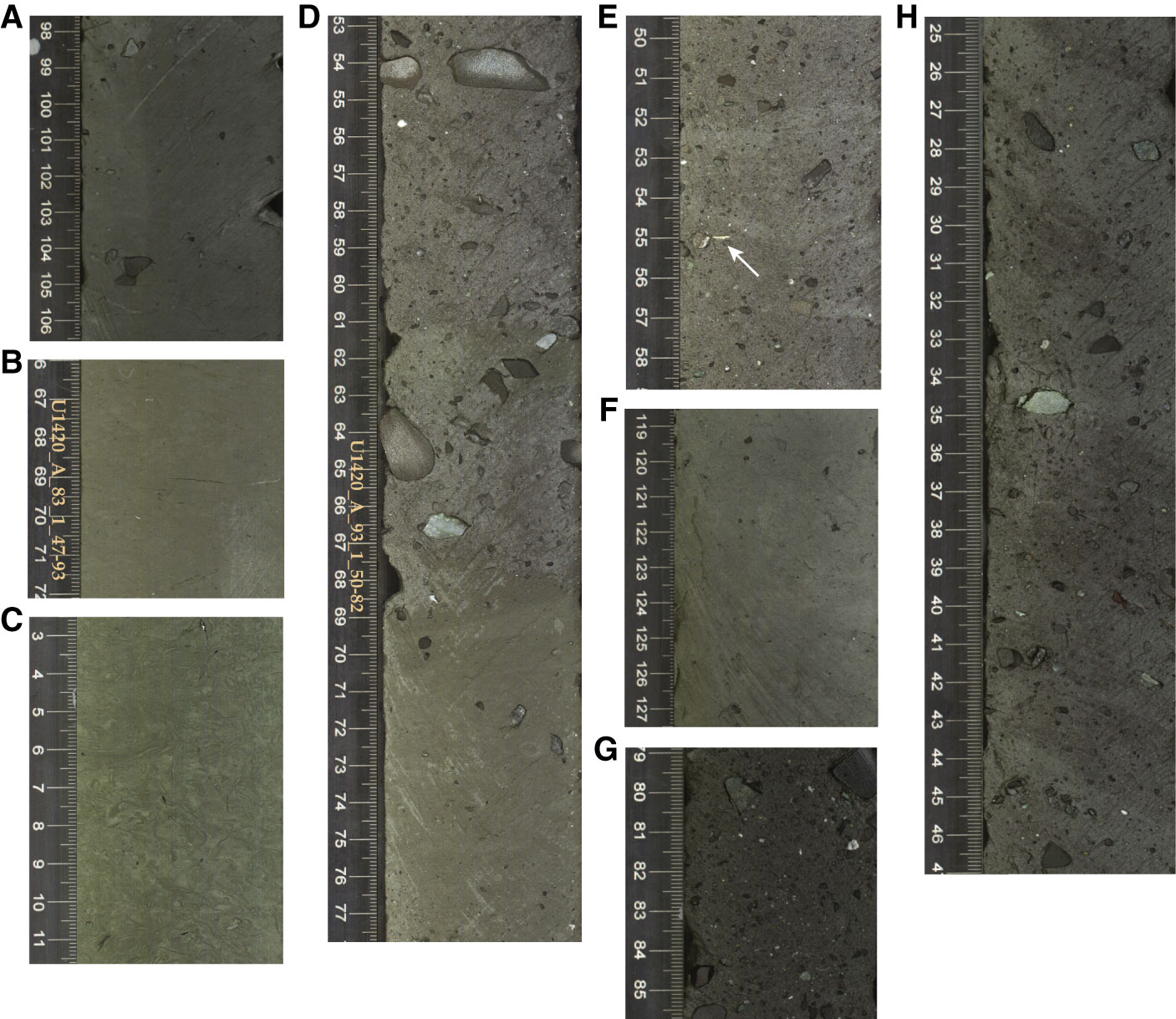
Figure F6. Examples of lithofacies of Site U1420. A. Dark gray (N 4) massive mud with lonestones (Facies F1a; interval 341-U1420A-63R-1A, 98–106 cm). B. Dark greenish gray (10Y 4/1) massive mud without lonestones (Facies F1b; interval 341-U1420A-83R-1A, 66–72 cm). C. Heavily bioturbated mud without lonestones (Facies F1b; interval 341-U1420A-63R-2A, 3–11 cm). D. Transition from clast-rich diamict (Facies F4f; interval 341-U1420A-93R-1A, 53–69 cm) to clast-poor diamict (Facies F4e; interval 93R-1A, 69–77 cm). E. Clast-rich diamict with shell fragments (arrows) (Facies F4f; interval 341-U1420A-94R-2, 50–58 cm). F. Mud with biosilica and dispersed clasts (Facies F5b; interval 341-U1420A-59R-2A, 119–127 cm). G. Carbonate-bearing, clast-rich diamict with sandy mud matrix (Facies F5c; interval 341-U1420A-71R-1A, 79–85 cm). H. Intercalated dark gray and very dark gray clast-rich diamict (Facies F4f; interval 341-U1420A-98R-3A, 26–47 cm).

Previous | Close | Next | Top of page